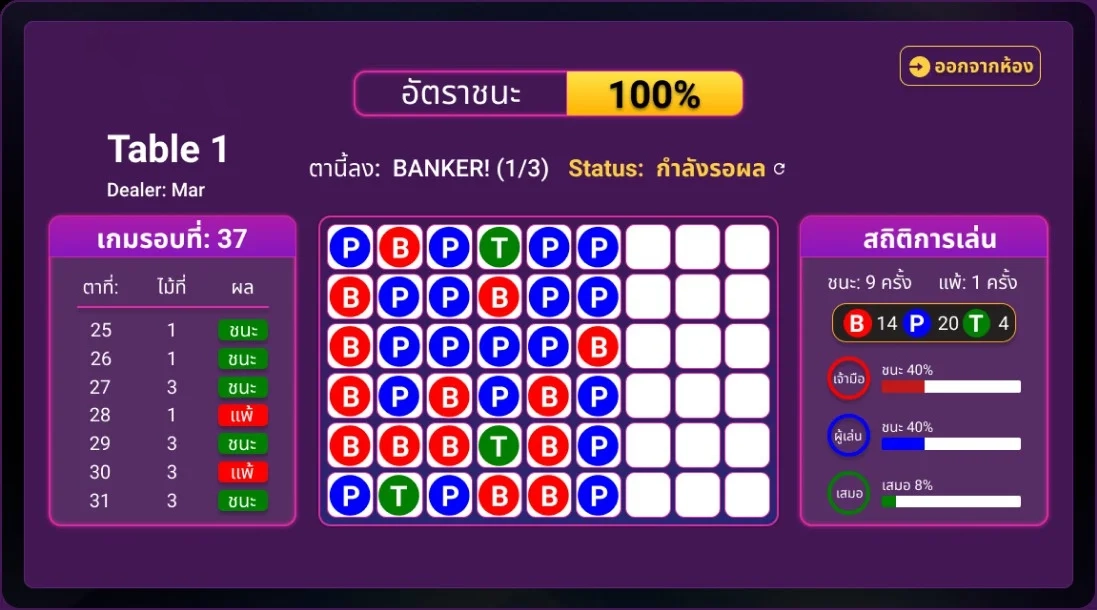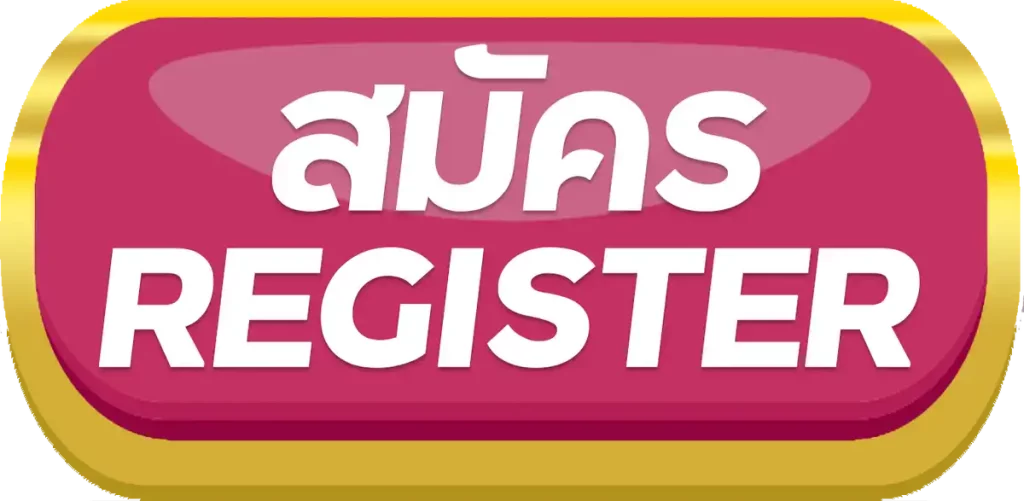














UFABET เว็บบาคาร่าออนไลน์ที่ดีที่สุดในประเทศไทย
หากพูดถึงเว็บบาคาร่าออนไลน์ที่ได้รับความนิยมในประเทศไทยแล้ว “UFABET” คงเป็นชื่อที่ทุกคนต้องนึกถึงเป็นอันดับแรกอย่างไม่ต้องสงสัย เพราะเว็บนี้ไม่ใช่แค่เว็บพนันทั่วไป แต่เป็นเว็บที่มอบประสบการณ์การเล่นพนันที่ไม่เหมือนใคร ที่เต็มไปด้วยความตื่นเต้นและโอกาสในการทำกำไรที่สูง UFABET เป็นเว็บที่ให้บริการเกมพนันออนไลน์อย่างครบครัน ไม่ว่าจะเป็นการเดิมพันกีฬาที่ครอบคลุมทุกประเภทกีฬา, คาสิโนสดที่ถ่ายทอดการเล่นจากสถานที่จริง, หรือเกมสล็อตที่มีให้เลือกมากมาย ทั้งนี้ยังมีอัตราการจ่ายที่สูงกว่าหลายๆ เว็บ ทำให้ทุกการลงทุนของคุณคุ้มค่ากับการเล่นที่นี่ จุดเด่นที่ทำให้ UFABET โดดเด่นก็คือการบริการลูกค้าอย่างมืออาชีพ ที่พร้อมดูแลและตอบสนองความต้องการของผู้เล่นในทุกๆ ด้าน ไม่ว่าจะเป็นคำถามเกี่ยวกับการเดิมพัน หรือปัญหาที่เกิดขึ้นในขณะเล่น ระบบการฝาก-ถอนเงินที่รวดเร็วและปลอดภัยก็เป็นอีกหนึ่งสิ่งที่ทำให้เว็บนี้เป็นที่น่าเชื่อถือ การทำธุรกรรมต่างๆ สามารถทำได้ง่ายๆ โดยไม่ต้องรอนานและทุกขั้นตอนมีความปลอดภัยสูง นอกจากนี้ UFABET ยังมีการออกแบบเว็บไซต์ที่ใช้งานง่าย ไม่ซับซ้อน แม้ผู้เล่นมือใหม่ก็สามารถเข้าใจได้ทันที ไม่ว่าจะเป็นการเลือกเกมเดิมพัน การวางเดิมพัน หรือการเข้าถึงข้อมูลต่างๆ ที่เกี่ยวกับเกม UFABET ได้ใส่ใจในทุกๆ รายละเอียดเพื่อให้ผู้เล่นสามารถเพลิดเพลินกับการเดิมพันโดยไม่มีปัญหาใดๆ หากคุณยังไม่เคยทดลองเล่นกับ UFABET เว็บตรงไม่ผ่านเอเย่นต์ อย่ารอช้า! สมัครสมาชิกแล้วเข้ามาลองเล่นตอนนี้ เพื่อสัมผัสประสบการณ์ที่ต่างออกไปจากเว็บพนันอื่นๆ รับรองว่าคุณจะได้รับประสบการณ์ที่น่าประทับใจ พร้อมทั้งโอกาสในการทำกำไรที่คุ้มค่าอย่างแน่นอน!
เล่นUFABET แนะนำเกมเดิมพัน UFABET ที่น่าสนใจที่สุด

เราคือเว็บ เล่น UFABET เว็บตรง ไม่ใช่เว็บผ่านเอเย่นต์ เราคือเว็บที่มีการเดิมพันครบวงจรที่สุดในโซนเอเชีย ไม่ว่าจะเป็นแทงบอลออนไลน์ที่มีการเดิมพัน บอลสด, บอลเดี่ยว, บอลสเต็ป, แทงบอล-สูงต่ำ และการเดิมพันอื่นๆอีกมากมาย ที่ท่านสามารถพบได้ที่เว็บUFABETของเราเท่านั้น ไม่เพียงแค่นี้ เรายังมีเกมพนันยอดฮิตอื่นๆอีกมากมายเช่น คาสิโนออนไลน์, คาสิโนสด, สล็อต,baccarat, เกมยิงปลา และรวมไปถึงเกมไพ่ทุกชนิดทุกรูปแบบ และมาพร้อมกับระบบฝาก-ถอนออนไลน์ที่รวดเร็ว มีความปลอดภัยสูงที่สุด
สำหรับมือใหม่ท่านใด ที่สนใจอยากเข้าร่วมกับเรา ท่านเพียงแค่สมัครสมาชิก ใช้เวลาไม่นาน 1 user สามารถเข้าเล่นเกมและพนันทั้งหมดได้ของเรา ท่านจึงไม่จำเป็นต้องโยกย้ายเว็บเพื่อเล่นเกมหรือพนันที่ต้องการเลย เพราะเราได้รวบรวมเอาไว้ให้ท่านแล้ว และสิ่งนี้ เป็นเพียงแค่การแนะนำการเดิมพันยอดนิยมและน่าสนใจที่สุดเท่านั้น ท่านยังสามารถพบการเดิมพันอื่นๆได้อีกเพียบ
ufabet เว็บแม่ สนับสนุนการพนันอย่างมีความรับผิดชอบ
UFABET ไม่เพียงแค่เป็นเว็บพนันออนไลน์ที่น่าเชื่อถือ แต่ยังมีความรับผิดชอบในด้านการพนันอย่างยั่งยืนและให้ความสำคัญกับการเล่นพนันอย่างมีสติและรับผิดชอบต่อสังคม ซึ่งเราในฐานะ ufabet เว็บแม่ มุ่งมั่นที่จะสร้างสภาพแวดล้อมที่ปลอดภัยและให้คำแนะนำที่ดีแก่ผู้เล่นทุกคน เพื่อป้องกันไม่ให้การพนันกลายเป็นปัญหาที่กระทบต่อชีวิตและความเป็นอยู่ของผู้เล่น ตามแนวคิดของ Jennifer Shatley ที่ทำงานใน UNLV International Gaming Institute และเป็นประธานสภาเนวาดาด้านปัญหาการพนัน เธอได้กล่าวว่า การเล่นพนันควรเป็นกิจกรรมที่สนุกและให้ความบันเทิง แต่ปัญหาจะเกิดขึ้นเมื่อผู้เล่นเริ่มใช้การพนันเป็นแหล่งรายได้หลัก หรือเมื่อพวกเขาเล่นการพนันด้วยเงินทั้งหมดที่มี ซึ่งทำให้เกิดความสูญเสียอย่างใหญ่หลวง สิ่งที่เราต้องการทำคือหยุดปัญหานี้ตั้งแต่เริ่มแรก ก่อนที่จะลุกลามไป เพื่อป้องกันปัญหาที่อาจเกิดขึ้นจากการพนัน เราจึงให้ความสำคัญกับการส่งเสริมการเล่นพนันอย่างมีความรับผิดชอบ โดยมีวิธีการที่ช่วยให้ผู้เล่นหลีกเลี่ยงปัญหาดังนี้:
กำหนดงบประมาณ: ควรกำหนดวงเงินที่สามารถใช้จ่ายในการเดิมพันได้โดยไม่กระทบกับความเป็นอยู่ประจำวันของตัวเอง ให้ยึดตามงบประมาณที่ตั้งไว้และไม่เกินกว่านั้น ซึ่งจะช่วยให้ผู้เล่นไม่เกิดการสูญเสียเงินมากเกินไป
หยุดเมื่อควรหยุด: การรู้จักหยุดเล่นเมื่อถึงเวลาเป็นสิ่งสำคัญ ไม่ว่าจะเป็นการชนะหรือแพ้ การหยุดเล่นในช่วงเวลาที่เหมาะสมจะช่วยป้องกันการสูญเสียที่ไม่จำเป็นและลดการตัดสินใจที่หุนหันพลันแล่น
การสนับสนุนการแก้ปัญหาการพนัน: UFABET ร่วมมือกับองค์กรที่ช่วยในการแก้ไขปัญหาการพนัน เพื่อสร้างความรู้และสนับสนุนผู้ที่อาจจะเผชิญกับปัญหานี้
การป้องกันการเข้าถึงของเยาวชน: เรามีระบบการตรวจสอบอายุที่เข้มงวด เพื่อป้องกันไม่ให้เยาวชนเข้าถึงการพนันและกิจกรรมที่ไม่เหมาะสม
ทำไมต้องเลือก ufabet เข้าสู่ระบบเว็บตรง กับ UFABET

หลายคนอาจจะสงสัยว่าทำไมต้องเลือกเล่นกับ UFABET เว็บตรง เมื่อเทียบกับเว็บพนันออนไลน์อื่นๆ เพราะเหตุผลที่เราเป็นเว็บพนันที่ได้รับความนิยมอย่างสูงนั้น มาจากการที่เรามุ่งมั่นให้บริการที่ดีที่สุดแก่ผู้เล่นทุกคน ด้วยประสบการณ์ที่ยาวนานและความเป็นมืออาชีพในการให้บริการ เราไม่เพียงแค่เป็นเว็บพนันออนไลน์ที่ให้คุณเดิมพันได้ทุกประเภท แต่ยังเป็นเว็บที่มีการบริการครบวงจรที่รองรับผู้เล่นจากทั่วทุกมุมโลก
UFABET คือเว็บที่ขึ้นชื่อในเรื่องของการเปิดให้เดิมพันมากที่สุดในเอเชีย ไม่ว่าจะเป็นการเดิมพันกีฬาออนไลน์ที่หลากหลาย, คาสิโนสดที่คุณสามารถสัมผัสกับการเล่นที่เสมือนจริง, เกมสล็อตที่มีให้เลือกหลายร้อยเกม หรือแม้แต่เกมพนันอื่นๆ ที่ท่านไม่สามารถพบได้จากเว็บอื่นๆ ทุกเกมล้วนมีคุณภาพสูงและถูกคัดสรรมาเป็นอย่างดี เพื่อให้คุณได้สัมผัสกับการเล่นที่สนุกสนานและมีโอกาสทำกำไรอย่างมากมาย ระบบภายในเว็บไซต์ของ UFABET ออกแบบมาให้มีความเรียบง่ายและใช้งานง่าย ไม่ยุ่งยากหรือซับซ้อน ซึ่งเหมาะสำหรับผู้เล่นทุกระดับไม่ว่าจะเป็นมือใหม่หรือมืออาชีพ ด้วยเมนูต่างๆ ที่สามารถเข้าถึงได้อย่างรวดเร็ว โดยระบบทั้งหมดถูกจัดระเบียบอย่างดีเพื่อให้ผู้เล่นสามารถเดิมพันได้อย่างสะดวกและรวดเร็ว
วิธีเล่นบาคาร่าให้ได้เงินทุกวัน เทคนิคเล่นเกม อย่างไรให้รวย
วิธีการเล่นบาคาร่าให้ได้กำไรทุกวัน ไม่ใช่เรื่องยาก หากคุณมีเทคนิคและกลยุทธ์ที่ดีในการวางเดิมพัน หลังจากที่คุณได้เลือกค่ายเกมบาการ่าที่สนใจแล้ว ขั้นตอนถัดไปคือการเรียนรู้เทคนิคการเล่นที่เหมาะสม โดยเฉพาะสำหรับมือใหม่ที่ยังไม่คุ้นเคยกับการเล่นบาการ่า การใช้เทคนิคจะช่วยให้คุณเพิ่มโอกาสในการทำกำไรและลดความเสี่ยงในการเสียเงิน บางครั้งคุณอาจจะโชคดี เดิมพันแบบสุ่มแล้วชนะ แต่การพึ่งพาโชคเพียงอย่างเดียวอาจไม่ทำให้คุณได้ผลลัพธ์ที่มั่นคงในระยะยาว การรู้จักเทคนิคการเดิมพันจะช่วยให้คุณมีทักษะในการเล่นที่ดีขึ้น และสามารถทำกำไรจากการเล่นบาการ่าทุกวันได้ การตั้งเป้าหมายการเดิมพันและการวางแผนก่อนเล่นจะช่วยให้คุณควบคุมการเล่นได้ดียิ่งขึ้น เช่น การกำหนดงบประมาณสำหรับการเดิมพัน การเลือกเดิมพันในฝั่งที่มีโอกาสชนะสูง หรือแม้กระทั่งการสังเกตสถิติของเกมเพื่อให้สามารถทำนายผลได้อย่างแม่นยำ เทคนิคเหล่านี้จะช่วยให้คุณสามารถเล่นบาการ่าได้อย่างมีประสิทธิภาพมากขึ้นและเพิ่มโอกาสในการทำกำไรอย่างสม่ำเสมอ.

เคล็ดลับการเล่นบาคาร่าให้ได้กำไร: สูตรง่ายๆ ที่ช่วยเพิ่มโอกาสชนะ
การเล่นบาคาร่าให้ได้กำไรไม่ใช่เรื่องของโชคอย่างเดียว ถ้าคุณมีสูตรหรือเทคนิคที่ดี ก็สามารถเพิ่มโอกาสในการทำกำไรได้จริงๆ เพราะเกมbaccaratเป็นเกมที่มีรูปแบบการเล่นที่ง่ายและรวดเร็ว แต่หลายคนอาจจะยังไม่รู้ว่าการใช้สูตรอย่างถูกต้องสามารถทำให้ผลลัพธ์ที่ได้ออกมาดีมากขึ้น
1. สูตรมังกร (Dragon Tiger)
สูตรนี้เป็นสูตรที่นิยมกันมากในหมู่ผู้เล่นbaccarat สูตรมังกรคือการสังเกตเมื่อผลของbaccaratฝั่งใดฝั่งหนึ่งชนะติดต่อกันหลายๆ รอบ เช่น หากฝั่งผู้เล่น (Player) ชนะติดต่อกันหลายครั้ง ก็ให้แทงฝั่งผู้เล่นไปเรื่อยๆ จนกว่าผลจะเปลี่ยนไป สูตรนี้จะได้ผลดีเมื่อฝั่งใดฝั่งหนึ่งชนะยาวๆ แต่หากผลการเล่นเปลี่ยนฝั่งบ่อยๆ สูตรนี้อาจไม่เหมาะสม
2. สูตรปิงปอง (Ping Pong)
อีกสูตรที่ได้รับความนิยมคือสูตรปิงปอง ซึ่งหมายถึงการสลับกันชนะระหว่างฝั่งผู้เล่น (Player) และฝั่งเจ้ามือ (Banker) สูตรนี้จะใช้ได้ผลดีเมื่อผลของเกมสลับไปมาระหว่างสองฝั่งบ่อยๆ เช่น หากฝั่งผู้เล่นชนะแล้วฝั่งเจ้ามือชนะตามมา ก็ควรเดิมพันสลับไปตามลำดับ
3. สูตรแทงทบ (Martingale)
สูตรนี้เหมาะสำหรับผู้เล่นที่มีงบประมาณเพียงพอ สูตรแทงทบคือการเพิ่มเงินเดิมพันเมื่อแพ้ทุกครั้ง เช่น หากคุณเดิมพัน 100 บาทแล้วแพ้ รอบถัดไปให้เดิมพัน 200 บาท เพื่อทวงคืนเงินที่เสียไปพร้อมกำไร สูตรนี้ใช้ได้ดีหากคุณมีทุนมากพอที่จะรองรับการเพิ่มเงินเดิมพัน
4. สูตรเดิมพัน 1:1
สูตรนี้คือการแทงในฝั่งที่มีอัตราจ่าย 1:1 เช่น ฝั่งผู้เล่น (Player) หรือฝั่งเจ้ามือ (Banker) วิธีนี้เน้นการเดิมพันที่มีความเสี่ยงต่ำ โดยเลือกเดิมพันที่อัตราจ่าย 1:1 ซึ่งมีโอกาสชนะสูงที่สุด สูตรนี้เหมาะสำหรับผู้เล่นที่ต้องการรักษาทุนและไม่ต้องการเสี่ยงเกินไป
5. การตั้งงบประมาณ
ไม่ว่าใช้สูตรใดก็ตาม การตั้งงบประมาณและรู้จักควบคุมทุนตัวเองเป็นสิ่งสำคัญที่สุด คุณควรกำหนดงบประมาณในการเล่นและไม่ควรเล่นเกินกว่าที่ตั้งไว้ หากเล่นเสียเกินกำหนดก็ควรหยุดเล่นทันที การควบคุมอารมณ์และการมีวินัยในการเดิมพันถือเป็นสิ่งที่ช่วยให้คุณเล่นbaccaratได้อย่างยาวนานและปลอดภัย

เข้าถึง UFABET ได้ทุกที่ทุกเวลา รองรับทุกแพลตฟอร์ม

ไม่ว่าคุณจะใช้มือถือระบบ iOS หรือ Android หรือแม้แต่การเล่นผ่าน PC คุณสามารถเข้าใช้งานเว็บไซต์ UFABET ได้อย่างสะดวกและไม่ยุ่งยาก รองรับทุกแพลตฟอร์มที่คุณใช้ เพียงแค่เชื่อมต่อกับอินเทอร์เน็ตเท่านั้น การเข้าเล่นกับ UFABET เว็บหลักจึงไม่มีข้อจำกัดใด ๆ ไม่ว่าคุณจะอยู่ที่บ้าน ที่ทำงาน หรือที่ไหนก็ได้ สามารถเข้าเดิมพันได้ทันที ทุกที่ทุกเวลา เว็บไซต์ของเราถูกออกแบบมาให้ใช้งานง่ายและรวดเร็ว ไม่ว่าคุณจะเข้าเล่นผ่านคอมพิวเตอร์หรือโทรศัพท์มือถือก็สามารถทำได้อย่างไม่มีสะดุด ไม่ต้องห่วงเรื่องอุปกรณ์หรือระบบที่คุณใช้ เพราะเราได้เตรียมทางเข้าไว้สำหรับทุกแพลตฟอร์ม เพื่อให้คุณสามารถเดิมพันได้อย่างต่อเนื่อง และสะดวกสบายที่สุด
อีกหนึ่งจุดเด่นของ UFABET คือการให้บริการที่พร้อมดูแลลูกค้าทุกท่านตลอด 24 ชั่วโมง ไม่ว่าคุณจะพบปัญหาหรือมีข้อสงสัยในระหว่างการเล่น ทีมงานมืออาชีพของเราพร้อมให้ความช่วยเหลือเสมอ เราเข้าใจดีว่าเรื่องของการเดิมพันอาจจะมีคำถามหรือข้อสงสัยเกิดขึ้นได้ทุกเมื่อ ดังนั้นเราจึงมีทีมแอดมินที่พร้อมตอบคำถามทุกข้อ เพื่อให้คุณได้รับคำแนะนำที่ถูกต้องและช่วยให้การเดิมพันของคุณเป็นไปได้อย่างราบรื่น ไม่เพียงแต่การให้บริการที่มีประสิทธิภาพเท่านั้น แต่เราใส่ใจในเรื่องของความปลอดภัยในการใช้งาน เว็บไซต์ของเรามีมาตรการรักษาความปลอดภัยที่ยอดเยี่ยมเพื่อปกป้องข้อมูลและเงินทุนของคุณ ทำให้คุณสามารถเดิมพันได้อย่างมั่นใจ ไม่มีความกังวลเรื่องความปลอดภัยใดๆ ทั้งสิ้น
เล่นบาคาร่าออนไลน์เว็บตรง ความสนุกและกำไรไม่รู้จบ
หากคุณกำลังมองหาเว็บคาสิโนออนไลน์ที่ให้บริการครบวงจรและมีความน่าเชื่อถือสูง ไม่ต้องสงสัยเลยว่าคุณมาถูกที่แล้ว! เว็บคาสิโนของเราไม่เพียงแต่เป็นแหล่งรวมเกมทำเงินที่หลากหลายจากทั่วโลกเท่านั้น แม้คุณจะไม่ใช่เซียนในวงการก็สามารถลงทุนและทำกำไรได้ง่ายๆ ด้วยตัวช่วยที่เราจัดเตรียมให้ พร้อมบริการที่ครบครัน และเกมที่อัพเดตใหม่อยู่เสมอ baccarat เว็บตรงของเรา พร้อมมอบโอกาสให้กับคุณด้วยเครดิตฟรีที่มอบให้ตั้งแต่ครั้งแรกที่สมัคร รวมไปถึงสูตรใหม่ล่าสุดที่เราอัพเดทอยู่เป็นประจำ ไม่ว่าคุณจะชื่นชอบการเล่นผ่านมือถือหรือคอมพิวเตอร์ เรามีแพลตฟอร์มให้คุณเลือกใช้แบบไม่จำกัด เรียกได้ว่าเล่นได้ทุกที่ทุกเวลา ไม่มีข้อจำกัดใดๆ
เว็บของเรามีสมาชิกจำนวนมากที่ไว้วางใจในบริการ ด้วยระบบที่เสถียรและมั่นคง ซึ่งทำให้การเล่นเกมนั้นลื่นไหล ไม่มีปัญหาการค้างหรือสะดุด ทุกเกมที่เราเลือกมาให้นั้นให้อัตราการจ่ายที่สูง เล่นง่าย ได้เงินจริง คุณสามารถเข้ามาลุ้นรางวัลจากเกมที่คุณชอบได้ตลอดเวลา ไม่ว่าจะเป็นbaccarat สล็อตออนไลน์ หรือเกมคาสิโนอื่นๆ ที่เรามีให้เลือกครบครัน เกมที่เราให้บริการได้รับการออกแบบมาเพื่อให้ผู้เล่นสามารถทำเงินได้ง่ายยิ่งขึ้น เราปรับปรุงระบบการเดิมพันให้มีความยืดหยุ่นและสะดวกสบาย ทำให้คุณสามารถรับกำไรได้เร็วขึ้น ไม่ต้องสลับยูสเซอร์บ่อยๆ เพียงแค่เข้าสู่ระบบและเลือกเกมที่คุณต้องการเล่นก็สามารถลุ้นรางวัลใหญ่ได้ทันที สนุกกับการเล่นคาสิโนออนไลน์ที่ไม่มีวันหยุด พบกับความสนุกที่ไม่ซ้ำซาก เลือกเล่นตามความชอบของคุณ และเริ่มต้นสร้างรายได้กับเราได้ง่ายๆ ผ่านสมาร์ทโฟนเครื่องเดียว ทั้งสะดวกและรวดเร็ว มาเป็นส่วนหนึ่งของเว็บคาสิโนที่ได้รับความนิยมสูงสุด และทำกำไรได้จริง ทุกวัน









